Offices of HIV Care and Prevention

The Offices of HIV Care and Prevention's mission is: to reduce the rates of new HIV infections; increase the number of county residents who know their HIV status earlier through HIV testing; and linking individuals who are positive into care.
As advocates for those living with, affected by or at risk for HIV, the Offices of HIV Care and Prevention provides leadership, resources, and guidance in collaboration with community members and organizations to coordinate Alameda County Public Health Department's delivery of HIV/AIDS health services throughout the 17 cities which make up Alameda County. (Alameda, Albany, Berkeley, Castro Valley, Dublin, Emeryville, Fremont, Hayward, Livermore, Newark, Oakland, Piedmont, Pleasanton, San Lorenzo, San Leandro, Sunol, and Union City).

The Offices of HIV Care and Prevention is creating PrEP (Pre-Exposure Prophylaxis) social marketing campaign materials targeting men who have sex with men of color, and Transgender women of color in Alameda County. Target campaign start date: January 1, 2017. In an effort to raise PrEP awareness immediately, OAA is working with local radio stations KBLX and Q102.1 to reach 10,000 listeners through a variety of activities. Enter our contest either on KBLX or Q102.1 to test your knowledge about PrEP and qualify to win prizes. Good luck!
Offices of HIV Care and Prevention References
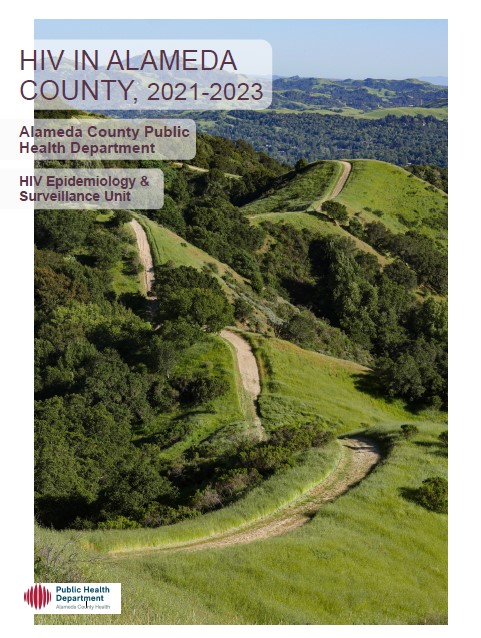 |
HIV in Alameda County, 2021-2023 This report is produced by the HIV Epidemiology and Surveillance Unit. It summarizes data on new HIV diagnoses, people living with HIV, and the continuum of HIV care in Alameda County from 2021-2023. This report presents data by selected demographic characteristics, trends, and the geographic distribution of HIV in Alameda County. The appendices provide a description of local HIV surveillance methods.
|
|
Summary – HIV in Alameda County, 2019-2021 This summary, produced by the HIV Epidemiology and Surveillance Unit, includes data on persons living with HIV, new diagnoses by selected characteristics, and the HIV care continuum. |
|
 |
HIV in Alameda County, 2016-2018 This report is produced by the HIV Epidemiology and Surveillance Unit. It summarizes data on new HIV diagnoses, people living with HIV, and the continuum of HIV care in Alameda County from 2016-2018. This report presents data by selected demographic characteristics, trends, and the geographic distribution of HIV in Alameda County and includes tables displaying detailed findings stratified analysis by sex, age, race/ethnicity, and foreign-born status. The appendices provide a description of local HIV surveillance methods. Executive Summary HIV in Alameda County, 2016-18 |
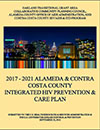 |
2017-2021 Alameda & Contra Costa County Integrated HIV Prevention & Care Plan This detailed plan represents Alameda and Contra Costa Counties’ ongoing efforts to address the HIV crisis though integrated prevention and care, with an emphasis on eliminating HIV-related disparities regionally. |
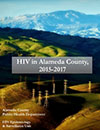 |
HIV in Alameda County, 2015-2017 Provides a summary of incidence and trends of select reportable acute communicable diseases in Alameda County from 2007 to 2013. Incidence rates by sex, age, race/ethnicity group and geography, as well as comparisons with other jurisdictions, are presented where possible. Executive Summary HIV in Alameda County, 2015-17 Summary of key findins found in the HIV in Alameda County, 2015-2017 annual report. |
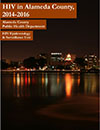 |
HIV in Alameda County, 2014-2016 This report is produced by the HIV Epidemiology and Surveillance Unit. It summarizes data on new HIV diagnoses, people living with HIV, and the continuum of HIV care in Alameda County from 2014-2016. This report presents data by selected demographic characteristics, trends, and the geographic distribution of HIV in Alameda County and includes tables displaying detailed findings stratified analysis by sex, age, and race/ethnicity. The appendices provide a description of local HIV surveillance methods. |
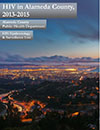 |
HIV in Alameda County, 2013-2015 This report, produced by the HIV Epidemiology and Surveillance Unit, summarizes data on new HIV diagnoses, people living with HIV, and the continuum of HIV care in Alameda County from 2013-2015. |
 |
HIV in Alameda County, 2012-2014 This report, produced by the HIV Epidemiology and Surveillance Unit, includes data on new diagnoses, persons living with HIV, trends, and the HIV care continuum by selected characteristics. |
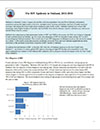 |
The HIV Epidemic in Oakland, 2012-2014 Published by the HIV Epidemiology and Surveillance Unit, this report ncludes Oakland data on new diagnoses, persons living with HIV, and trends, by selected characteristics. It also describes Oakland’s progress toward Fast-Track Cities Initiative indicators. |
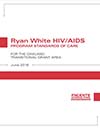 |
Ryan White HIV/AIDS Program Standards of Care Policies and laws that apply to each service category, including the Oakland Transitional Grant Area. |
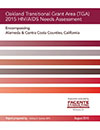 |
2015 HIV/AIDS Needs Assessment for People Living with HIV/AIDS in the Oakland TGA Assessment, completed by Facente Consulting, involved an extensive community effort over several months. Community input was obtain in a variety of ways to assess the following target areas: Impact of ACA for those who are HIV+ and the needs and issues of those co-infected with HIV and HCV. The Assessment was used during the Priority Setting and Allocations process for FY2016. |
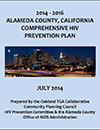 |
2014-2016 Alameda County HIV Prevention Plan This plan has been designed so anyone interested in HIV prevention can easily understand the current needs and trends for Alameda County, along with what is needed to help reduce the spread of HIV in the future. |


